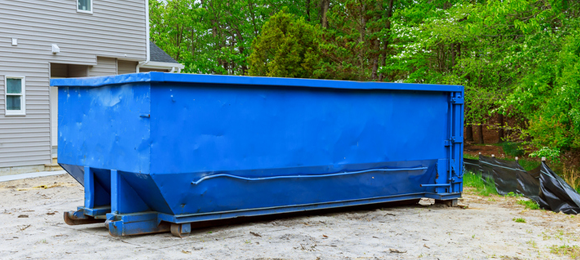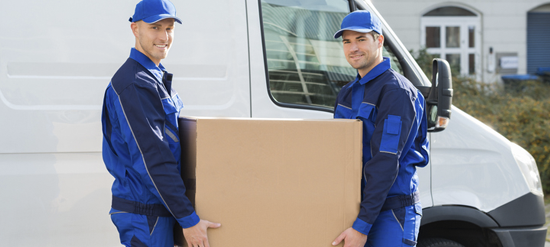
Updated February 22, 2023
Whether you're a weekly recycler or you've hired a junk removal company that will recycle your trash on your behalf, you might be wondering how exactly recycling facilities work.
We've gathered everything you need to know if you've ever been curious about how your recyclables are separated and reused.
We'll go over:
- How Recyclables Are Separated
- How Plastic Is Recycled
- How Aluminum Is Recycled
- How Glass Is Recycled
- How Steel Is Recycled
- How Paper and Cardboard Is Recycled
- What NOT to Put In Your Recycling Bin
- How to Find a Recycling Dumpster
Find junk removal companies in your area
How Recyclables Are Separated

Recyclables are separated by machinery, but sometimes paper and cardboard are required to be separated by hand.
Types of Recycling Methods
Single-stream recycling is when recyclable material is all thrown into the same receptacle and a machine separates them.
If you have a recycling bin that does not require you to separate paper and cardboard from other recyclables, your local recycling facility uses a single-stream method.
Double-stream recycling is when paper and cardboard are separated from all other recyclables (glass, plastic, etc.) before being accepted at the facility.
How Mechanical Separation Works
With either system, the items that need to be separated are separated by rotary screens.
When paper products need to be separated, air blows from below the screens to push their light weight to a conveyor belt for only paper products.
There are employees that monitor this area for pieces of plastic or aluminum that are light enough to be pushed up with the paper products and move them to the lower conveyor belt.
On this lower conveyor belt, a large magnet picks up all steel to be put in their appropriate area.
From there, glass, plastic, and aluminum are then sent to an air classifier machine where more air pushes light items up and away from the machine.
Heavy glass items fall to a separate conveyor system, which then leaves plastic and aluminum remaining.
These remaining items then enter an eddy current separator, which magnetizes aluminum.
Once the aluminum passes over the magnetic rotor, the opposite poles push the aluminum items off of the conveyor belt, leaving only the plastic.
Learn more: The World's First Robotic Recycling System
How Plastic Is Recycled
There are 7 different classes of plastic that must be separated accordingly.
Some facilities hire employees to do this by hand while more updated facilities utilize infrared sensors that use light to distinguish one type of plastic from the others.
While there are 7 different types of plastic, types 1 and 2 are recycled most frequently.
The 7 different types of plastic include...
#1 PET: Polyethylene Terephthalate is the type of plastic most often used for protecting food and beverages.
#2 HDPE: High-Density Polyethylene is a thicker material that is most often used to create containers for household products, like shampoo and conditioner, laundry detergent, bottles for medication, etc.
#3 PVC: Polyvinyl Chloride is used for making pipes. Instead of being melted, this type of plastic must be ground down into a powder, which is why it's recycled less often.
#4 LDPE: Low-Density Polyethylene is a thin and durable material used to make garbage bags, grocery bags, etc.
#5 PP: Polypropylene is used on the outer layering of diapers and takeout containers used by restaurants due to its ability to withstand high heat.
#6 PS: Polystyrene is the scientific term for styrofoam, which is rarely, if ever, accepted in recycling facilities.
#7 Other: Material classified has #7 plastic is a combination of different types of plastic which makes it incredibly difficult to recycle. Because of this, fewer and fewer manufacturers are using this type of plastic. It's common that your baby bottles, water jugs, and coolers contain #7 plastic.
Step 1: Plastics Are Rinsed
Once recyclable plastic is separated, it must be washed to ensure the recycling process isn't compromised by food residues, labels, dirt, etc.
Washing plastic before recycling is a crucial step in the recycling process, and it's important that those that are recycling at home also remember to do this step before contributing their waste.
Step 2: Plastics Are Shredded
At this point, the plastic is then put through high-volume shredders which create much smaller pieces of plastic.
Step 3: Plastics Are Further Inspected
These smaller pieces are checked again for any imperfections or contaminants that need to be removed before being manufactured.
They are then separated by their class again using machines that use the plastic's density to distinguish the type of plastic it is.
Step 4: Plastics Are Melted and Repurposed
From here, the shredded plastic is melted and compounded into plastic pellets that are ready to be used by manufacturers ready to create new packaging and products.
It's important to note that while grocery store bags are recyclable, many recycling plants do not have the equipment to recycle them and the contribution of these bags can severely damage recycling machinery, sometimes even shutting down whole plants for days at a time.
Make sure to research your area's recycling facility rules and requirements before accidentally putting in items that are not accepted.
How Aluminum Is Recycled
Aluminum has a more straightforward recycling process than plastics.
Step 1: Aluminum Is Shredded
The aluminum is shredded up into smaller pieces before being melted it all down.
Step 2: Aluminum Is Melted and Repurposed
This melted aluminum is then put into molds which are sold to manufacturers who use these molds to create aluminum sheets.
These sheets can be turned into soda cans, license plates, aluminum foil, and more.
Keep reading:
- Recycling 101: Learn How to Recycle More and Throw Out Less
- Rent a Recycling Dumpster: Sizes and Costs
- What to Look for When Using a Hauling Service for Recyclable Materials
Find local recycling dumpster rental providers
How Glass Is Recycled

Recycling glass is much like aluminum's recycling process.
Step 1: Glass Is Broken Up
Glass is shattered into smaller pieces and melted into molds that are used by manufacturers.
However, clear glass must be separated from colored glass.
Colored glass has additional dyes, sulfur, and iron to create their different looks, and each color glass must be separated and melted down together.
Green, brown, blue, and other colored glass must all stay separate from one another.
Step 2: Glass Is Melted and Repurposed
Once sorted and cleaned, glass is then mixed with raw materials, like sand and soda ash, and melted in a furnace.
Once melted down, glass is then shaped to make new bottles and jars.
How Steel Is Recycled
Once the steel has been separated from other materials, it is baled and shipped to a steel mill or foundry.
This scrap metal is then melted with other scrap metals, like car parts, in a special furnace that reaches nearly 3,000 degrees.
The melted metal is then cast into slabs and rolled into flat rock or steel sheets, capable of being produced into other products.
How Paper and Cardboard Is Recycled

More often than not, paper and cardboard are baled up at the recycling center and sent off to a paper mill for the actual recycling process.
Step 1: Pulp Is Created
Paper and cardboard are made up of wood fibers and water, so adding these materials to a hot bath breaks this material down into a mushy pulp.
This pulp is filtered through to remove any ink, adhesives, or other impurities.
Once the pulp has gone through the first filtration step, it is put into an aerated tank with surfactants and more water.
The heavy pulp sinks to the bottom of the tank with the water while the ink floats to the surface where it can be easily removed.
Step 2: Pulp Is Processed Into Paper
The leftover pulp is now ready to be processed to make new paper and cardboard products.
What NOT to Put In Your Recycling Bin
As previously mentioned, plastic grocery store bags should not be put in your recycling bin unless explicitly stated otherwise.
Any products with food residue that has not or can not be cleaned, like pizza boxes, should not be recycled.
You could risk contaminating thousands of pounds of recyclable material by introducing biodegradable into the recycling system.
While electronics, batteries, and lightbulbs can and should be recycled, they cannot go in your regular city recycling bin.
Look up special drop-off or collection days in your area for these types of recyclables.
How to Find a Recycling Dumpster
You can find reputable, locally-owned dumpster rentals in your area by using Hometown.
By doing a quick search, you can see a list of providers that service your area and request free quotes with the click of a button.
We recommend getting at least 2-3 different quotes to ensure you're being quoted a competitive price in your area.
Get free recycling dumpster quotes near you
Learn more:


